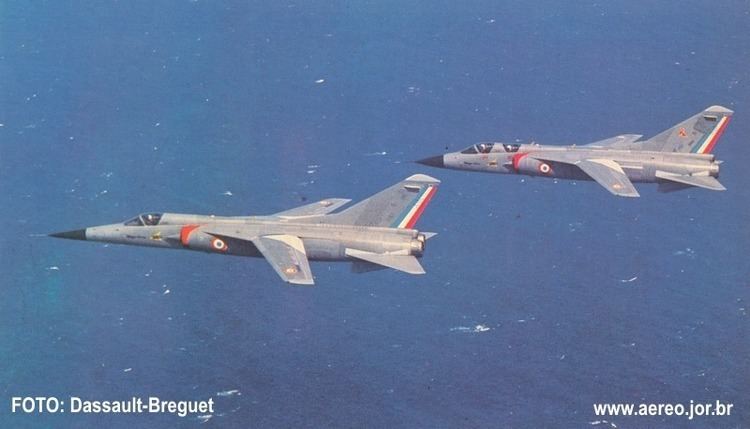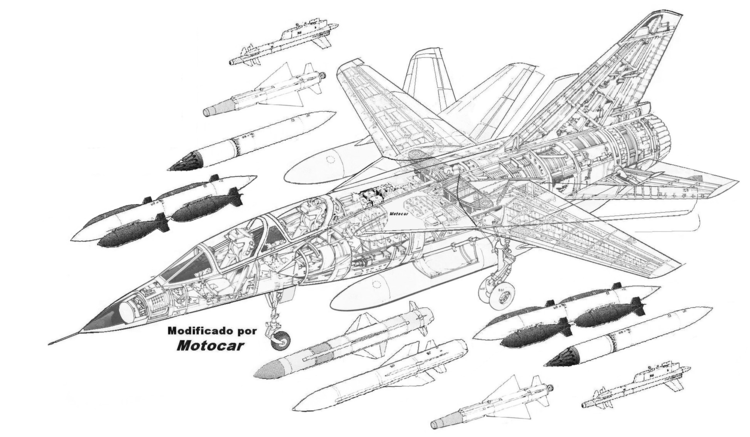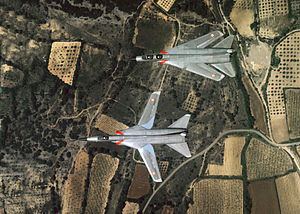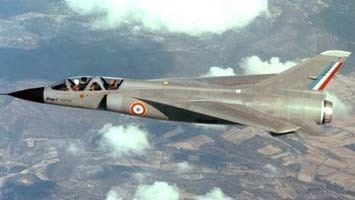Wingspan 8.71 m First flight November 18, 1967 | Length 19 m | |
 | ||
Dassault mirage g
The Dassault Mirage G was a French two-seat twin-engined variable-geometry prototype fighter, built by Dassault Aviation in the late 1960s. The aircraft was further developed into the twin-engine Mirage G4 and G8 variants as a multi-role jet fighter capable of both interception and nuclear strike missions. Although Dassault built and flew prototypes, the entire programme was terminated in the 1970s without the aircraft entering production.
Contents
- Dassault mirage g
- Development
- Mirage G4
- Mirage G8
- Cooperation on LTV V 507
- Aircraft on display
- Specifications Mirage G
- Specifications Mirage G8 02
- References

Dassault mirage g
Development

In 1964 the French defence ministry requested a development programme on variable-sweep wing aircraft for dual land and aircraft carrier use. France had participated with the Anglo-French Variable Geometry aircraft (AFVG) before abandoning their interest; later Dassault received an order for a prototype, powered by a single Pratt & Whitney/SNECMA TF-306 turbofan in October 1965.

The first variable-sweep aircraft from Dassault emerged as the single-engined, two-seat Mirage G fighter in 1967, essentially a swing wing version of the Mirage F2. The wings were swept at 22 degrees when fully forward and 70 degrees when fully aft and featured full-span double-slotted trailing edge flaps and two-position leading edge flaps.

Flight trials were relatively successful but no production order ensued, the Mirage G programme being cancelled in 1968. Flying with the Mirage G continued however until 13 January 1971 when the sole prototype was lost in an accident.
Mirage G4

The basic Mirage G was developed into a twin-engine, two-seat nuclear strike fighter, the Mirage G4 after a separate contract was issued in 1968 for two aircraft to be built. These aircraft were intended to be powered by Snecma M53 turbofans in production. While the aircraft were under construction the requirements changed and the French military requested that the design be converted into a dedicated interceptor.
Mirage G8

Mirage G4-01 was redesignated G8-01 and remained a two-seat aircraft (first flight 8 May 1971) with the second aircraft, G4-02 becoming a single-seat version, G8-02 (first flight 13 July 1972). The G8 variants were equipped with Thomson-CSF radar and a low-altitude navigational-attack system based on that used in the SEPECAT Jaguar and Dassault Milan. As no funding was included for the Mirage G8 in the 1971-1976 French defence budget the aircraft did not enter production.
Cooperation on LTV V-507
The Ling-Temco-Vought (LTV) company is in search of skills on the variable-geometry wings, within the framework of the program Light Weight Fighter (future McDonnell Douglas F A-18 Hornet) and in search of the VFX (future Grumman F-14 Tomcat). This company decides to cooperate with the Avions company Marcel Dassault, which has just made a success successfully of the development of the Mirage G. Two agreements are signed in 1968, for general cooperation and other one on the variable-geometry wings. For the competition VFX, the prototype LTV V-507, inspired by the Mirage G, is rejected to the benefit of the Grumman F-14 Tomcat. In the reading of the file of the LTV V-507, the Grumman company asks for numerous further information, in front of the interest of the technical solutions held for the Mirage G. The Pentagon envisages this plane as basis for the program Light Weight Fighter, but other solutions are used.
Aircraft on display
Dassault Mirage G8-01 is on public display at the Musée de l'Air et de l'Espace near Paris.
Specifications (Mirage G)
General characteristics
Performance
Specifications (Mirage G8-02)
General characteristics
Performance
